Whether you recently adopted a new dog or are spending a lot of money on new pet essentials, toys, and accessories, a dog harness is something you may want to consider.
“The more adjustable the harness, the better it can fit your dog’s exact measurements,” advised Dr. Tara Hansen, a veterinarian at Chewy with over twenty years of experience. “Harnesses are a newer, reliable way of securing a dog. When properly designed, one advantage of using a harness is that it diminishes choking and avoids putting pressure on the neck or windpipe area.”
RELATED: The best dog food brands for every pup’s diet, per veterinarians
Many pup parents (myself included) buy harnesses to keep their dogs from pulling. However, Dr. Hansen advised that “harnesses will not automatically resolve pulling issues unless they are specifically designed with this intent.” Often, we want a perfectly trained dog, but the truth is “training is still required,” and it begins with us.
It’s also important to focus on the material type. Dr. Hansen recommends looking for something “comfortable against the skin” that doesn’t “chafe” to avoid irritation. “It is also important that the harness doesn’t unbalance or stress your pet’s natural walk, which could lead to joint or muscle injuries,” she said.
Best Overall: Julius-K9 IDC Powerharness Nylon Reflective No Pull Dog Harness- Best for Small Dogs: Frisco Small Breed Soft Vest Step-In Back Clip Dog Harness
- Best Headcollar: PetSafe Gentle Leader Padded No Pull Dog Headcollar
- Best Budget: Frisco Comfort Padded Dog Harness
- Best for Puppies: Best Pet Supplies Voyager Step-in Lock Dog Harness
Since we’re always searching for the perfect gift for dog owners and where to find chew toys, we searched high and low for the best online dog stores selling top-quality products, fast shipping, and excellent service.
Chewy quickly rose to the top of our list of contenders due to its extensive product range, convenient access to on-demand veterinary services, and comprehensive pharmacy care offerings.
Dr. Hansen gave excellent recommendations for all types of dogs, from small to large pups, to help us pick the right one for your needs.
Best Overall: Julius-K9 IDC Powerharness Nylon Reflective No Pull Dog Harness
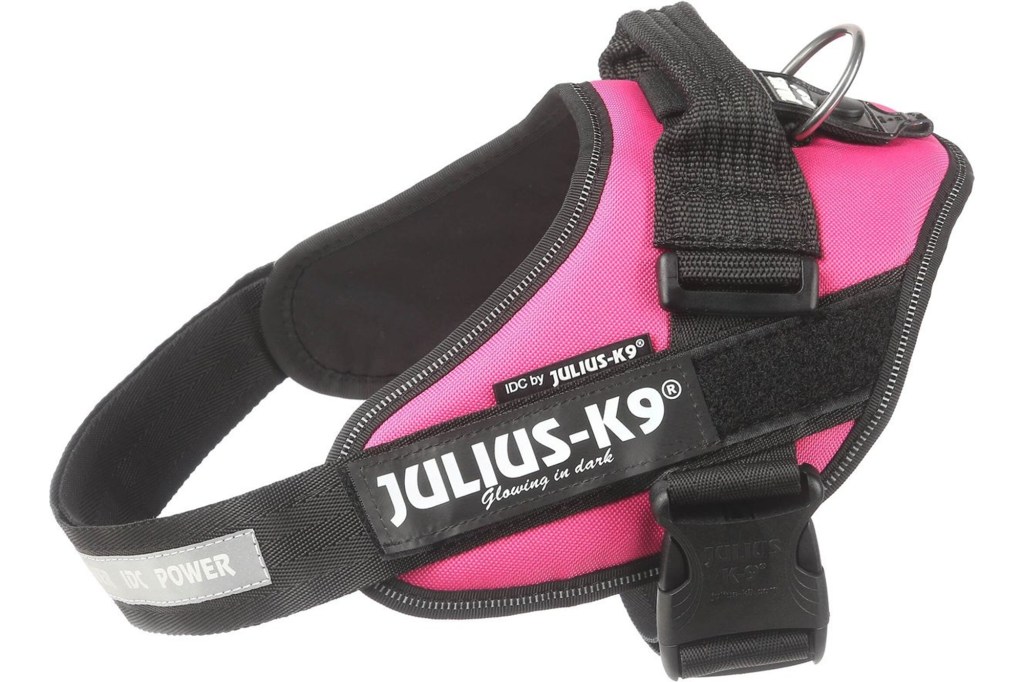
Pros:
- Reflective for night walks
- Guards against pulling
- Padded for comfort
Cons:
- Price may be a barrier for some
Dr. Hansen emphasized the importance of a good fit, stating, “Robust buckles are important…if a dog panics and can easily escape or break the harness, they are at high risk of fleeing into dangerous situations like dog fights or traffic and have a higher chance of getting lost.”
This no-pull harness reflects light at night and is effective for even the strongest pullers. Lined with skin-friendly Eco-Tex soft material, it prevents irritation from rubbing, keeping your pup comfortable.
Best for Pullers: PetSafe Easy Walk Dog Harness
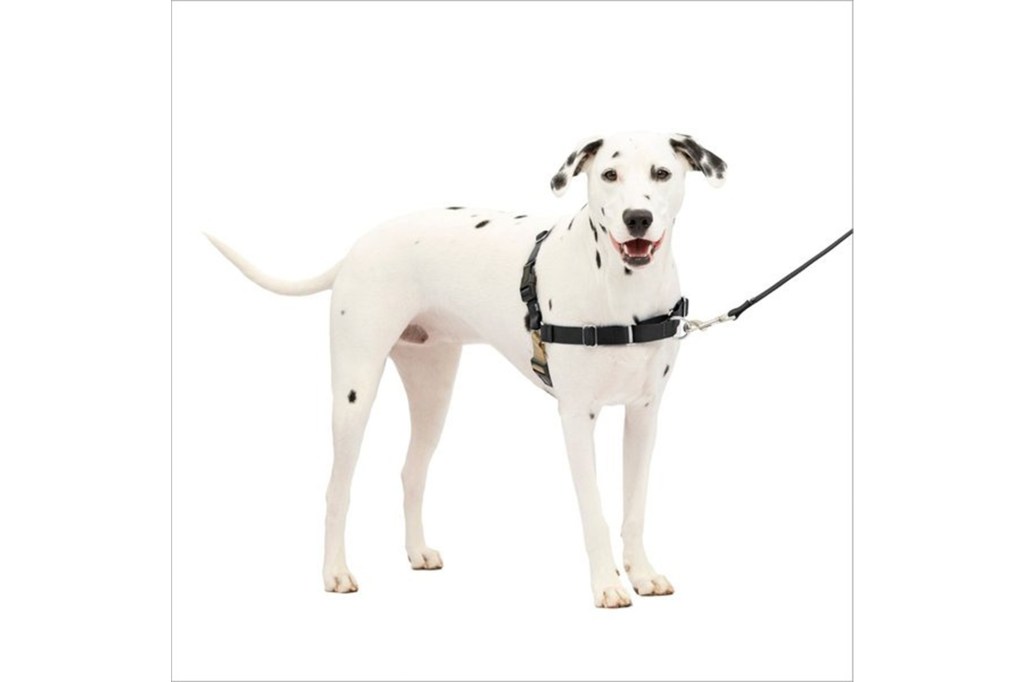
Pros:
- Prevents the dog from pulling
- Doesn’t choke the dog positioned around the chest
- Good price
Cons:
- None we can find
Designed specifically for pullers, the loop feature discourages pulling by applying gentle pressure on the shoulders. Positioned around the chest, it prevents gagging or choking.
“The more adjustable the harness, the better it can fit your dog’s exact measurements,” advised Dr. Hansen. From petite to x-large, this harness has plenty of options and colors.
Best for Small Dogs: Frisco Small Breed Soft Vest Step-In Back Clip Dog Harness
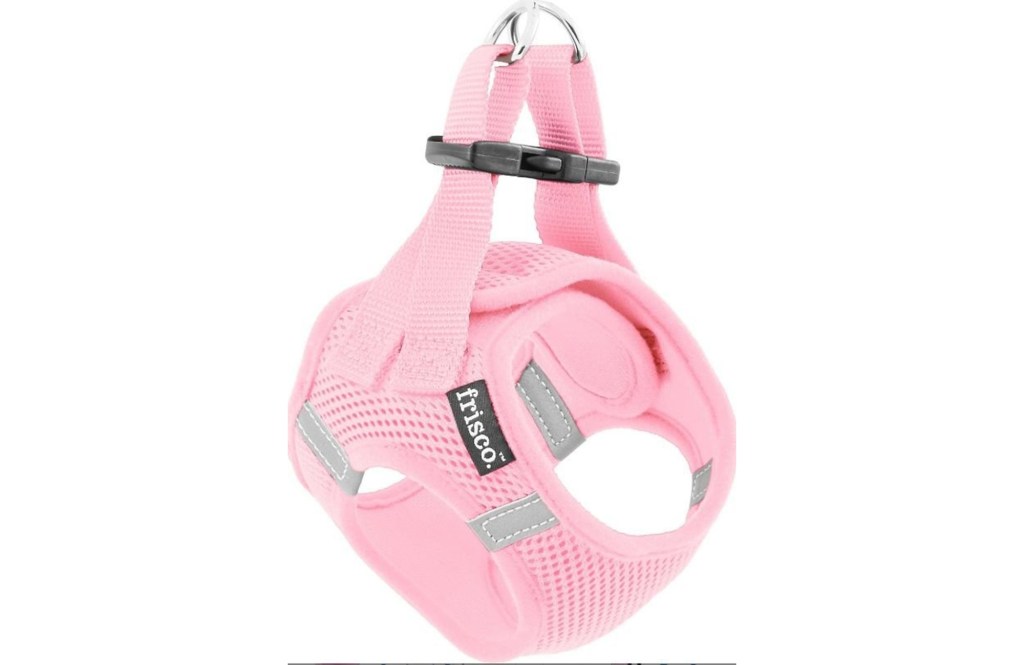
Pros:
- Great for small dogs but
- Padded for comfort
Cons:
- Only four colors to choose from
“Most good-quality harnesses have straps made from materials that are difficult to tear/stretch and easy to wipe down, like nylon or leather,” said Dr. Hansen. “These harnesses may have ripstop, breathable mesh, or cotton/padded components that are removable for laundering.”
This harness has ample padding for comfort while ensuring breathability to prevent your dog from overheating. Embedded with four reflective bands along the sides, it guarantees your canine companion’s visibility during nighttime adventures.
Best Budget: Frisco Comfort Padded Dog Harness
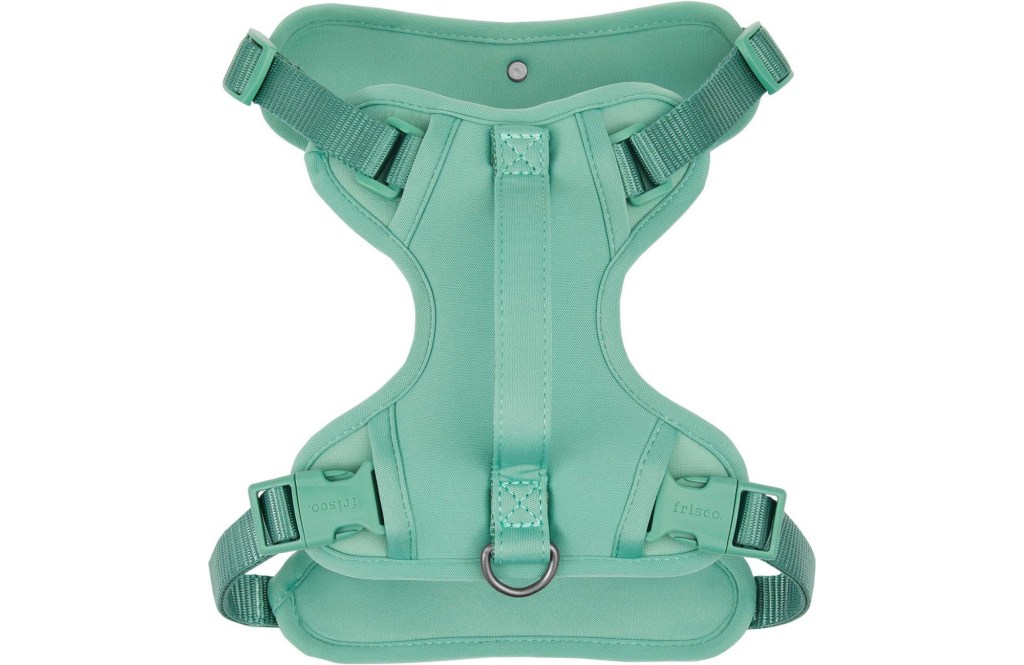
Pros:
- Padded for extra comfort
- Easy to wipe down and clean
Cons:
- Only available in sizes from small to extra-large, which is fewer size options than other brands provide
This design helps those with sensitive skin by providing extra padding, which helps minimize irritation. To find the right size, Dr. Hansen recommends closely following the manufacturer’s directions.
“Accurate measurements of the neck, chest, tors, and weight of the dog may be important pieces of information to gather, depending on manufacturer directions.”
Best Front-Connect Harness: K9 Explorer Brights Reflective Front-Connect Harness
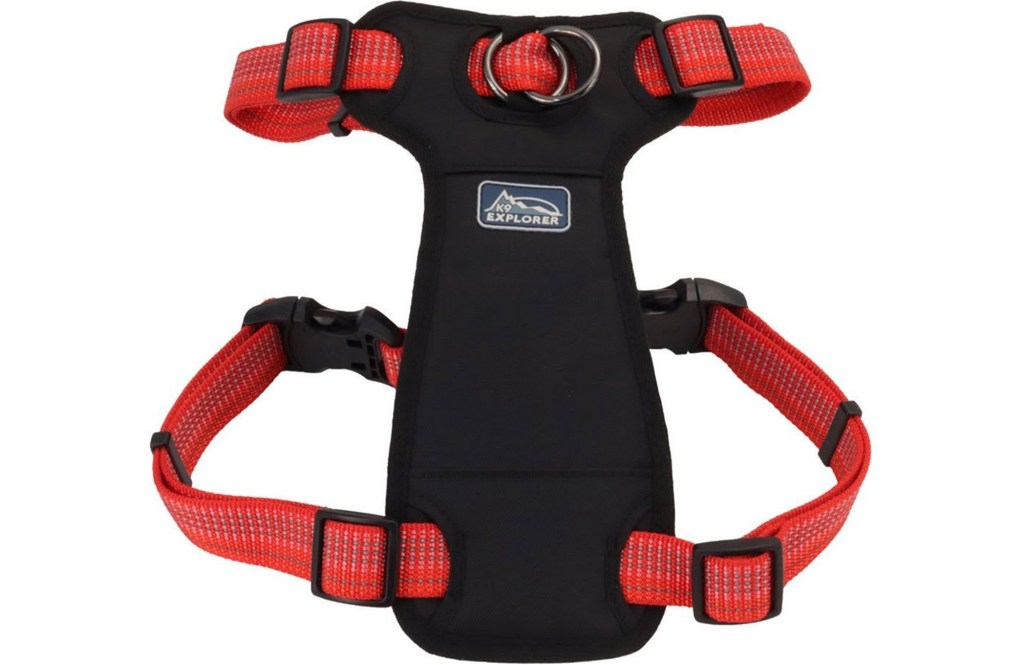
Pros:
- Clip on the back and front
- Adjustable straps
- Padded for comfort
Cons:
- Can cause matting
“Front-clip, no-pull harnesses work by pulling the dog slightly to the side, changing their trajectory back towards the walker,” said Dr. Hansen.
This harness provides a front-clip option to prevent pulling, a back clip for versatility, and a soft pad for the chest and underbelly. However, if your dog is prone to matting, this soft pad may not be the best choice as it can cause the fur to flatten even more. In such cases, we recommend the PetSafe Easy Walk Dog Harness.
Best Headcollar: PetSafe Gentle Leader Padded No Pull Dog Headcollar
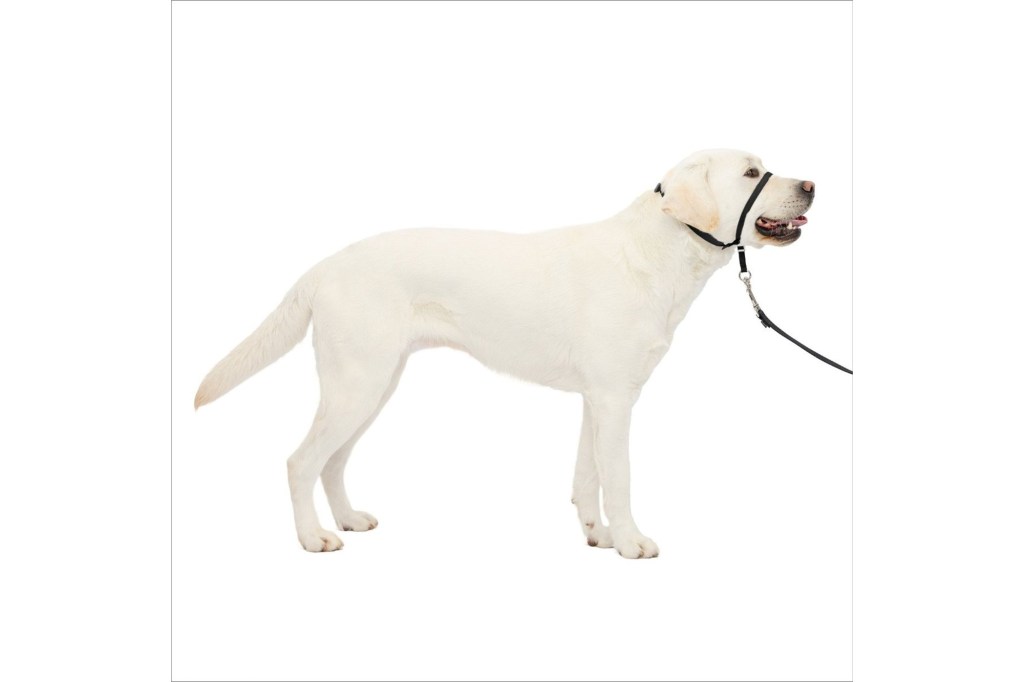
Pros:
- Designed dogs who want to lead
- Lots of sizes and colors
Cons:
- None we can find
“Dogs who learn to walk on front clip no-pull harnesses or head harnesses like a Gentle Leader may be transitioned to walking on a back clip harness or collar with dedicated time and training,” said Dr. Hansen. “This teaches the dog that the only way to move comfortably is to leave slack in the lead and avoid pulling against the harness.”
Available in various sizes, from petite to extra large, you’re guaranteed to discover the perfect color match among eight available shades.
Best for Large Dogs: One Tigris FireWatcher 2.0 Tactical Dog Harness
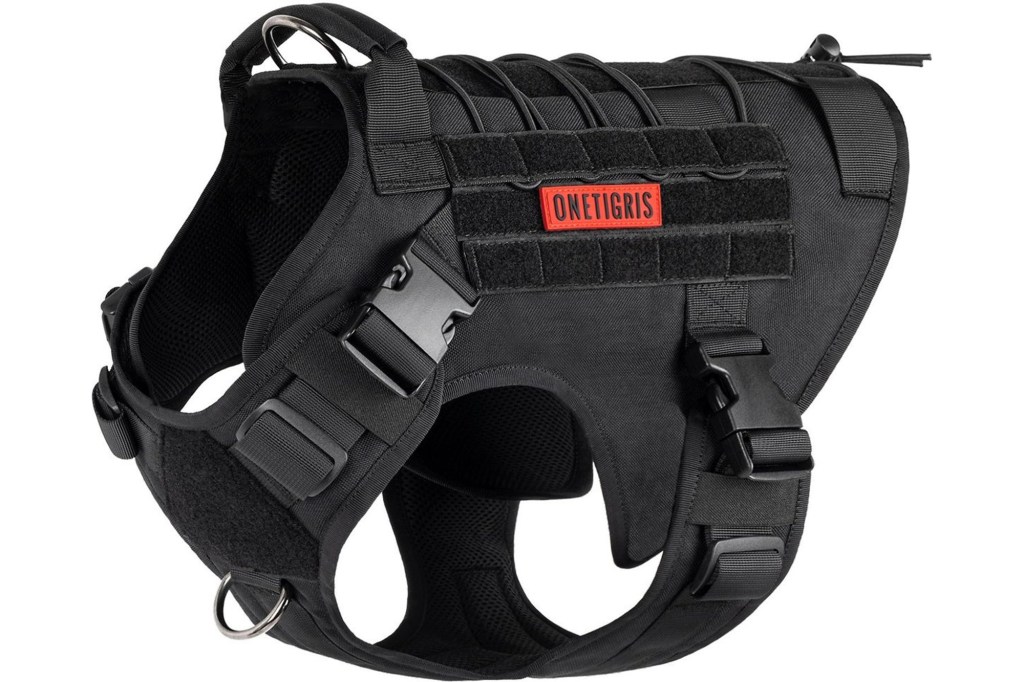
Pros:
- Great for chewers
- Easy to clean
Cons:
- Not designed for small dogs
“Harnesses that attach to the back…allow dogs to pull forward easily without correction and may make them pull more enthusiastically,” said Dr. Hansen. She added, “For large dogs, this can be particularly unwelcome behavior. The most successful way to eliminate pulling behavior is through training.”
This harness features clips both in the front and back. This dual functionality allows for easy transitioning from training to graduate level. Made from sturdy 1,000-denier nylon, the harness has exceptional durability and is conveniently easy to wipe clean.
Best for Puppies: Best Pet Supplies Voyager Step-in Lock Dog Harness
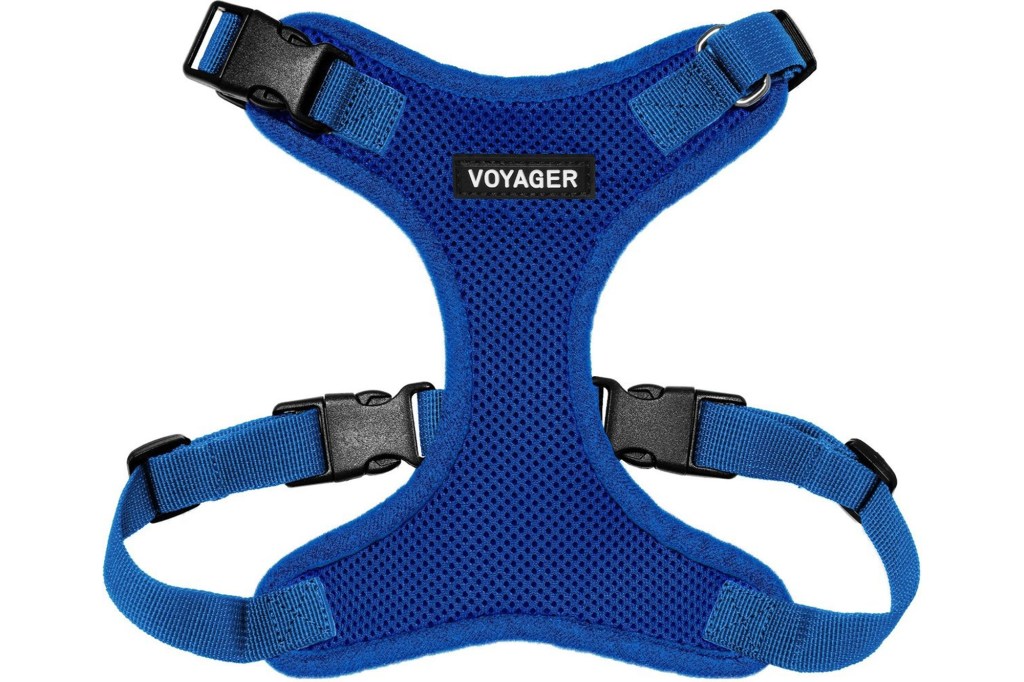
Pros:
- Padded around the chest
- Comes in xx-small to x-large
- Great value
Cons:
- Chewers can work their way through this material pretty easily if given the chance
Voyager was a great option for our dog, Lucy, when she was a puppy. She didn’t slip out of the harness because it provided ample chest coverage. The harness was incredibly easy to put on with a simple clip-and-go design.
It was also an excellent way to train her to wear materials on her body while she was young. Generally, when your dog is a puppy, it’s best to start introducing them to items like rain jackets and booties. At this stage, they are still learning what is “normal” and will more easily accept these items as standard as they grow older.
An FAQ on dog harnesses
We contacted Zach Neumann, a leader and product expert on Chewy’s merchandising team with expertise across merchandising, supply chain, and operations. Neumann gave us the 411 on dog harnesses — including what to look for and all about them (for new dog moms and dads, especially.)
What should one look for in a dog harness?
“Our customers keep durability, adjustability and comfort at the top of their list when looking for a harness,” Neumann told The Post.
What did he recommend? Choosing a harness that fits your dog’s specific needs, whether it’s specialized for small dogs, adventurous pups, or long car rides, is waterproof, or is suitable for just a simple walk around the neighborhood.
When are dog harnesses typically used?
According to Neumann, it’s a preference, not necessarily a use case.
“Small dogs and large dogs are often great candidates for a harness, as they create less stress on a pup’s neck,” he explained. “Some trainers prefer harnesses to collars and vice-versa. If a pet parent is unsure of their ability to direct a pup on a collar, then a harness is good option.”
What different types of dog harnesses exist on the market?
When it comes to harnesses, there’s no one-size-fits-all.
“Finding the best harness will depend on your pup’s body type, whether or not they pull on walks and style preference,” he said. “As a best practice, we recommend a dual-clip harness, which offers both a front and back clip, to find what works best for your pup.”
What is a tactical harness?
“Tactical dog harnesses are developed specifically to meet the needs of working K9’s in military and law enforcement capacities to aid in training and operations,” Neumann shared. “Many tactical vests offer mounting points for carrying equipment and large handle grips for extra control in extreme working environments, and metal hardware that won’t break during working dog activity.”
Tactical harnesses aren’t just for working dogs, though – the extra control and strength is great for outdoor activities like hiking.
What are “no-pull” harnesses?
“If your pup is only wearing an ordinary dog collar, she can put a lot of tension on her throat as she strains forward, especially if you grip the leash or yank it back,” Neumann said. “This kind of pressure can hurt your dog’s neck regardless of her size, but especially if she belongs to a smaller breed.”
The best no-pull dog harnesses have straps that cross above your pup’s shoulders and can be fastened at the center of your dog’s chest and behind her front legs. The dog harness will also have a clip in front of the leash.
“Once you clip the leash to the front ring and begin walking, your dog has to stay by your side in order to keep moving forward,” he added. “If she does pull, the leash goes off to the side — not straight back —which directs your dog back towards you. That gives you greater ability to control and guide your dog back to your side by applying a little pressure,”
How do you know what size dog harness to use? How do you typically apply a dog harness?
Regardless of which type of harness you choose for your pup, whether it’s a step-in harness or a non-pull option, you will need to make sure the fit is right. Here are some tips for measuring your dog so you can pick out the right harness size the first time around:
“In order to find the right size, you will need to know the weight of your dog and to take some measurements of their chest and neck,” Neumann added. “To get the most accurate measurements, use a flexible cloth tape measure, like the ones that tailors use. When measuring your dog’s chest, you should place the end of the tape measure at the bottom of the rib cage, behind the front legs, and loop it around their back to bring it back to the bottom of the rib cage. To measure your pup’s neck, find the thickest part of their neck and take that measurement.”
When you look at harness sizes, you will notice that most of the size charts are broken into two measurements (neck and chest girth), and they sometimes have a weight sizing guide. You will use the two measurements you have taken to find the best fit, per Neumann.
“It’s suggested to size up if your dog is right on the cusp because you can always tighten a harness,” he added. “You don’t want to limit your dog’s range of movement by putting him in a too-snug harness. A tight harness can also cause chafing and hair loss.”
According to Neumann, to make sure your pet’s harness is not too tight, stick two fingers under the harness while it is on your dog. “You want to be able to fit those two fingers under the harness and have it be snug,” he advised.”Signs that your harness is not fitting properly include chafing, hair loss, your dog wiggling out of it, the back piece rotating to the sides or your dog just refusing to walk in it.”
What material are dog harnesses typically made from?
Nylon, Polyester, and synthetic fabrics are the most common harness materials, per Neumann. However, harnesses come in plenty of other options, including leather, cotton, rubber, natural fabrics, neoprene and fleece.
At what age of dog should you use a dog harness?
“There’s no ideal age for a harness, nor are there specific non-use cases, but remember that some harnesses have hooks on the back, which can actually help train your dog to pull you, which is the opposite of what you want,” Neumann said.
What do you recommend for dogs with weaker necks?
Above all else, use a harness! “Just make sure that the fit is snug, but still accommodates two fingers’ width when you test the fit,” he recommended.
Why Trust Post Wanted by the New York Post
This article was written by Emma Sutton-Williams, New York Post Commerce Reporter. Proud dog mom to a Mini Sheepadoodle named Lucy, Emma routinely tests top-rated pet products with her pup to find the best recommendations for fellow pet owners. In search of the best dog food brands, leashes, harnesses and more, Emma taps veterinarians and experts like Cesar Millan, better known as the “Dog Whisperer,” for pet health advice, FAQs and training secrets. In addition to her work at the Post, Emma’s byline has appeared in Rolling Stone, Oprah Daily, Parents, InStyle, StyleCaster and more.
Hunting for a headline-worthy haul? Keep shopping with Post Wanted.








